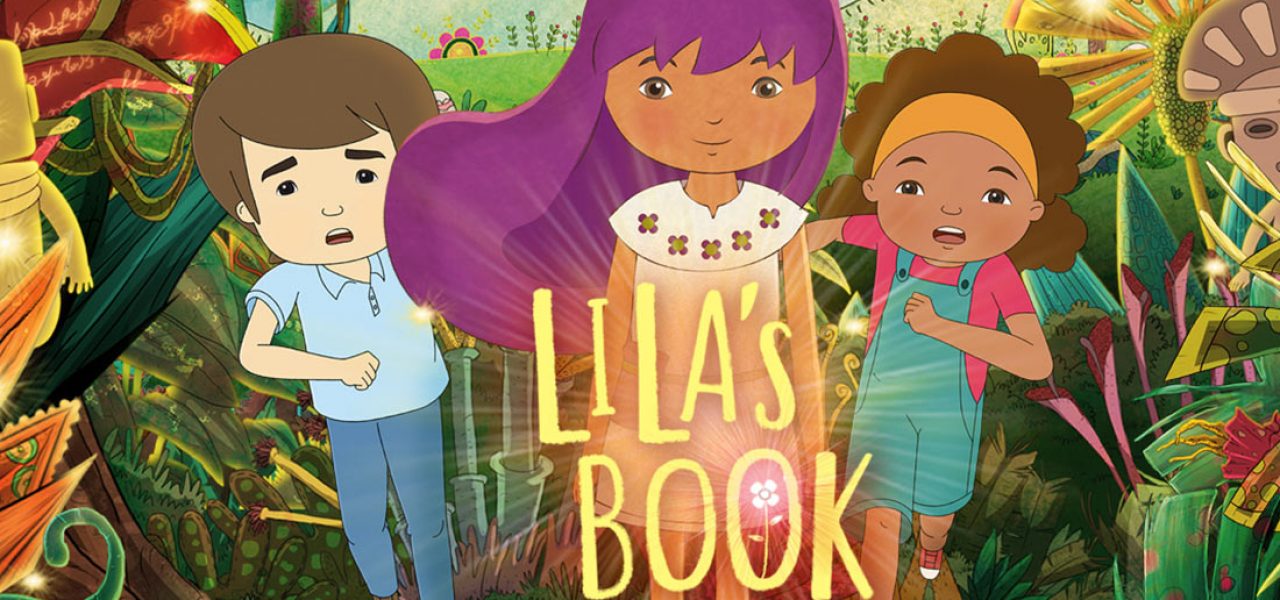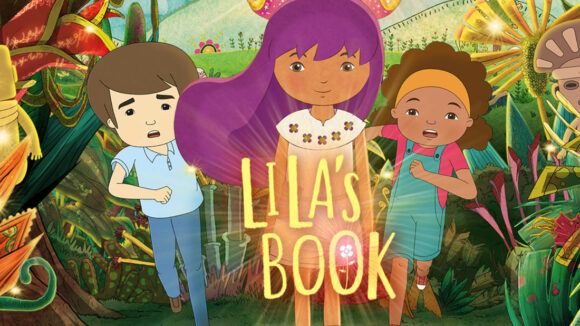

‘Lila’s Book,’ Colombia’s First Animated Feature Directed By A Woman, Opens Today
Lila’s Book (El Libro de Lila) is a movie of firsts.
As the first animated feature film to be directed by a woman in Colombia and the first ever produced in the city of Santiago de Cali, in the southwest Cauca Valley region, the movie showcases the strong institutional support available in a country that is embracing the animation industry with enthusiasm.
Despite being the twelfth Colombian animated feature film, the movie is also among the first to be specifically aimed at children. Colombia’s preoccupation with adult and documentary-style animated features feels perhaps at odds with international trends where children are typically the main target group.
Lila’s Book director and scriptwriter Marcela Rincon cannot offer an explanation for the larger focus on adult and teenage audiences in Colombian production, but she has noticed “some underappreciation of the possibilities of children’s animation, possibly explaining some Colombian filmmakers’ disregard.”
For a film which proudly claims in its press release to have created a “very Colombian animation style,” it makes sense that Rincon cites other films with distinctive styles as key references, such as Dominique Monféry’s Eleanor’s Secret, Alê Abreu’s Boy and the World, and Tomm Moore’s The Secret of Kells and Song of the Sea. Above all however, Rincon acknowledges Hayao Miyazaki’s movies as being the most influential on her, especially with their tendencies for strong female characters and their melancholic lament for a natural world eroded by human development.
But she also puts the claim to a unique Colombian style in context. Not just referring to aesthetics and theme, the style she refers to also stems “more from the way we developed the project, and managed the budget, the schedule, and the human resources,” finding a compromise between what she wanted to do and what was achievable within her means.

The plot for Lila’s Book was clearly inspired by a sentence from Michael Ende’s fantasy novel The Neverending Story (1979). Rincon found inspiration after reading the contemporary classic and wondering what happens to book characters when nobody reads the book in which they are featured. Lila’s Book takes us on a journey to a literary world called Forgetfulness, with two children who travel there to rescue Lila, their favorite book character, who has been kidnapped.
The 76-minute movie was created with the help of Marcela Rincon’s sister Maritza Rincon, who was the film’s producer. Together they founded Fosfenos Media in 2005 to produce content for children. “Animation was the most logical option for us,” Marcela Rincon told Cartoon Brew. “My stories always include fantasy plots which would be unaffordable to film with real sets and characters”.
Marcela wrote the script over three years, while the studio produced live-action projects and their first animated tv show Guillermina and Candelario. The domestic success of the tv show in Colombia coupled with a grant awarded for script development were the final pushes needed to get Lila’s Book started.

Film production took four years to complete. The first year was spent in pre-production, followed by two years of production, and another year to complete post-production.
The production team was comprised of 160 people: 60 artists involved with design, illustration, and animation work; 60 musicians to record the film’s score; and the remainder from Palermo Studio, the Uruguayan co-production team who worked on development tasks, as well as the production, legal, and technical teams of Fosfenos Media.
While the film’s adult voices are provied by renowned Colombian actors – such as the father from the telenovela Yo soy Betty, la fea (which inspired the American remake Ugly Betty) – the youngsters in the film were selected from a casting call of 360 children with no previous acting experience.
Collaboration with Uruguayan scriptwriter Federico Ivanier, and Alfredo Soderguit from Palermo Estudio, director of feature film Anina, was essential to improving Lila’s Book’s story structure and visual design during the early development stages. Both Rincon and Soderguit sought inspiration for the movie’s backgrounds from Cali’s architecture. Other Colombian landscapes such as the Tatacoa desert and the rainforests of the Pacific regions also contributed to the film’s distinctive visual identity.

As one of the most important characters in the story, the elderly female ‘Guardian of the Memory’ merged diverse elements of Colombian folklore and was developed in collaboration with Colombian writer Vera Carvajal. The character embodies both pre-Colombian indigenous cultures and traditions that arrived from Africa, and is a guiding figure in the story. Rincon acknowledges that the character provides recognition of the role of women in many pre-Colombian cultures.
Music was another key element in defining the identity of the film. Black, indigenous elements from the Pacific Colombian region’s musical tradition, such as the marimba instrument, and the voice of prominent Afro-Colombian musician Leonor Gonzalez Mina – known as the “la Negra Grande de Colombia” (Great Black Woman of Colombia) – blend in symphony. The soundtrack was created by L.A.-based Colombian film composer Juan Andrés Otálora.

Rincon feels that founding Fosfenos Media was the only option she and her sister had to produce the projects they wanted to create. A former journalist, Rincon reflects that her “natural inclination is to work as a scriptwriter,” and that having their own company allows her to follow through on their ideas.
Speaking to her role as Colombia’s first woman feature animation director, she says that, in her opinion, gender inequality can be addressed through state institutions by offering better education and funding. “To have more women working as directors and especially producers, we need more media education and places where young women can experiment and create.”
The lack of animation producers in general concerns her due to its impact on the future of the sector in the country: “Investing in more producers is essential. There are many creative talents in the country but few people have the knowledge and skills to get projects off the ground.”
Institutional support explains the recent growth of Colombian animation in the current decade. Many public subsidies are currently available for local animation companies, and the model is being explored by other Latin American countries.

Lila’s Book, for example, benefited a great deal from this support. With a modest budget of USD$1.5 million, the movie obtained seven grants for development, becoming the first film in the country to be financed mostly through public funding.
The film received strong support from the Colombian Ministry of Culture and Ministry of Information Technologies and Communication, who awarded it with four grants and four sets of prize money after winning awards. This amounted to more than any other national animated project to date, with most of the funding for Lila’s Book coming from public film programs and entities such as FDC-Proimagenes, Ibermedia Program, Parquesoft Pacífico, and Vivelab Project.
Rincon is optimistic about the influence of Lila’s Book on the professionalization of local animation teams. With no animation schools in Cali and few throughout the whole of Colombia, one of the main challenges during Lila’s creation was to train staff in the use of the film’s production software, Toon Boom Harmony.

The studio flew in the only available official Spanish-speaking trainer from Canada, the Mexican Miguel Ángel Martínez, to teach the team for several weeks. This experience also helped create a local community of Harmony-trained professionals, and many team members from Lila’s Book are now involved in other animation projects in the city.
Lila’s Book opens today in Colombia, with distribution in its home country by Cinecolor Films Colombia. The international premiere is set for next month at the 22nd Busan International Film Festival in South Korea, while international sales and distribution are being handled through Stuttgart-based Sola Media.


.png)